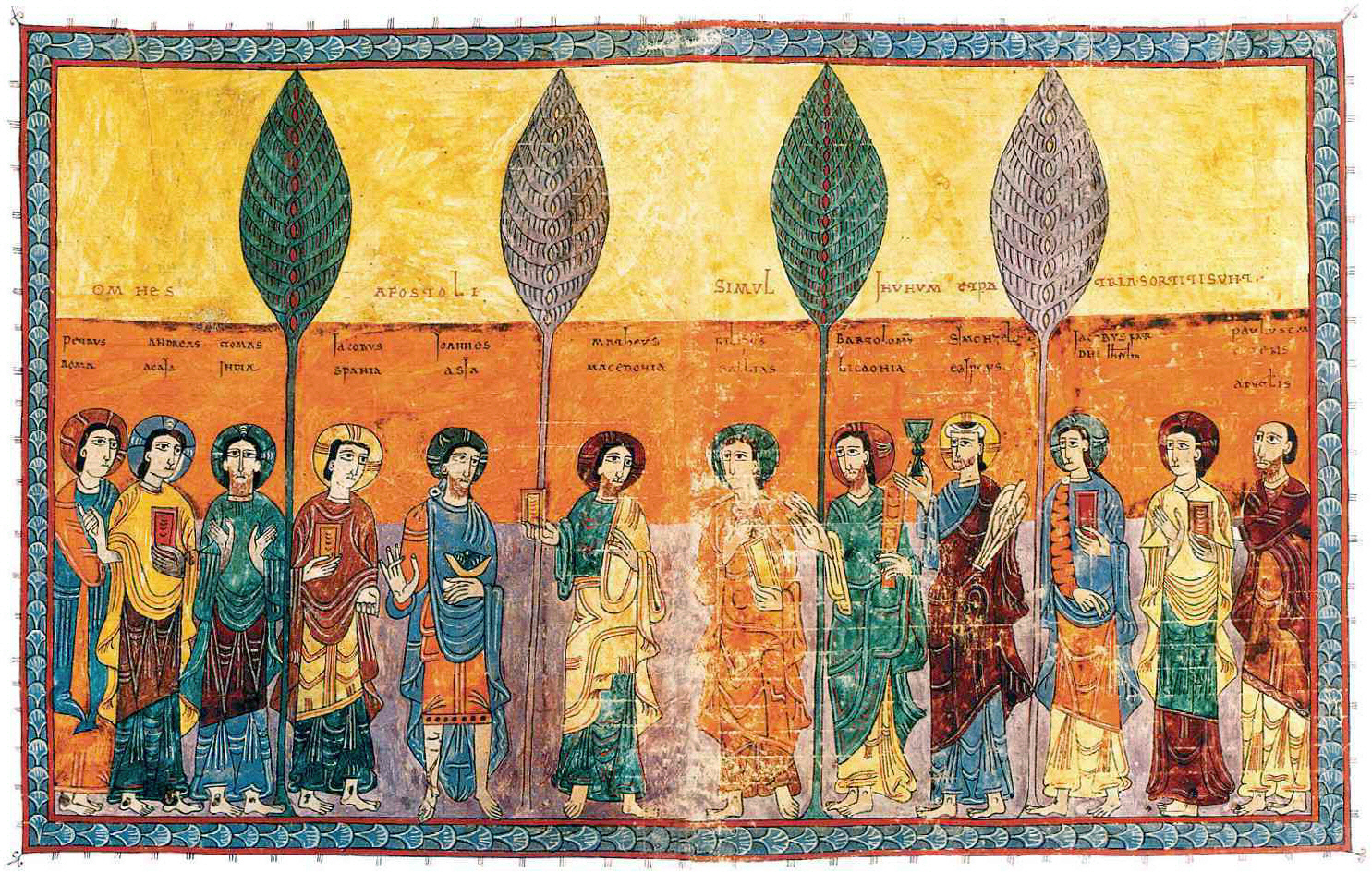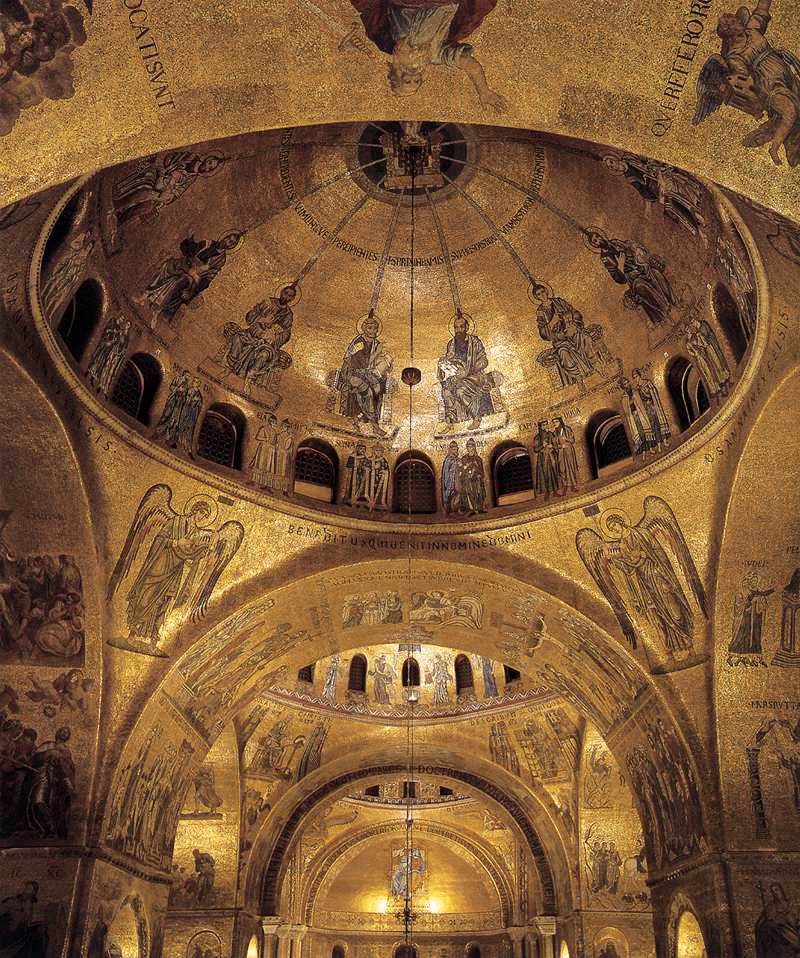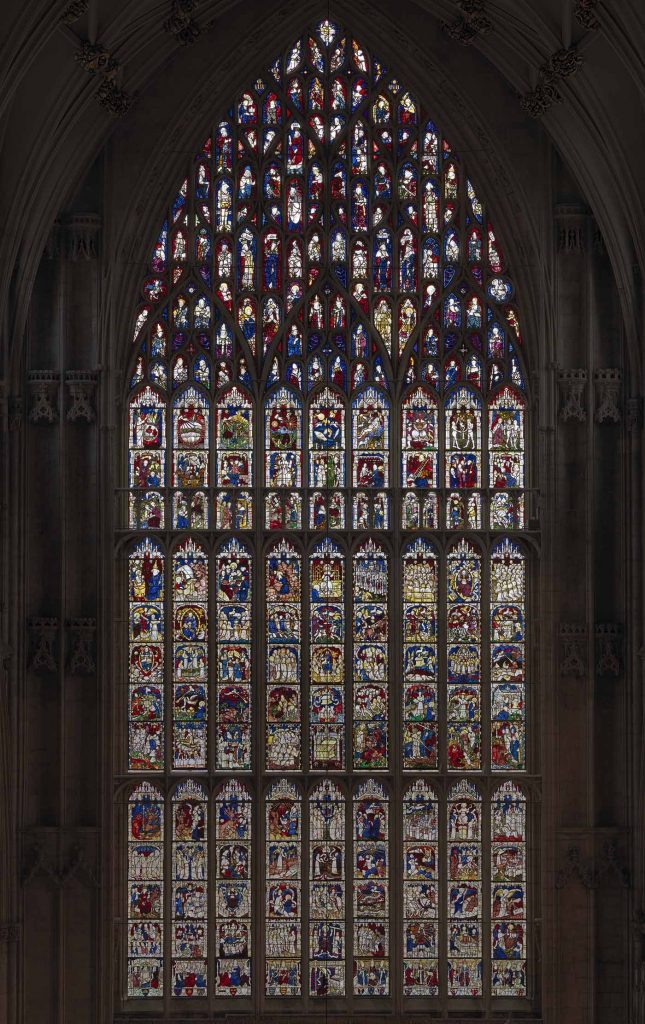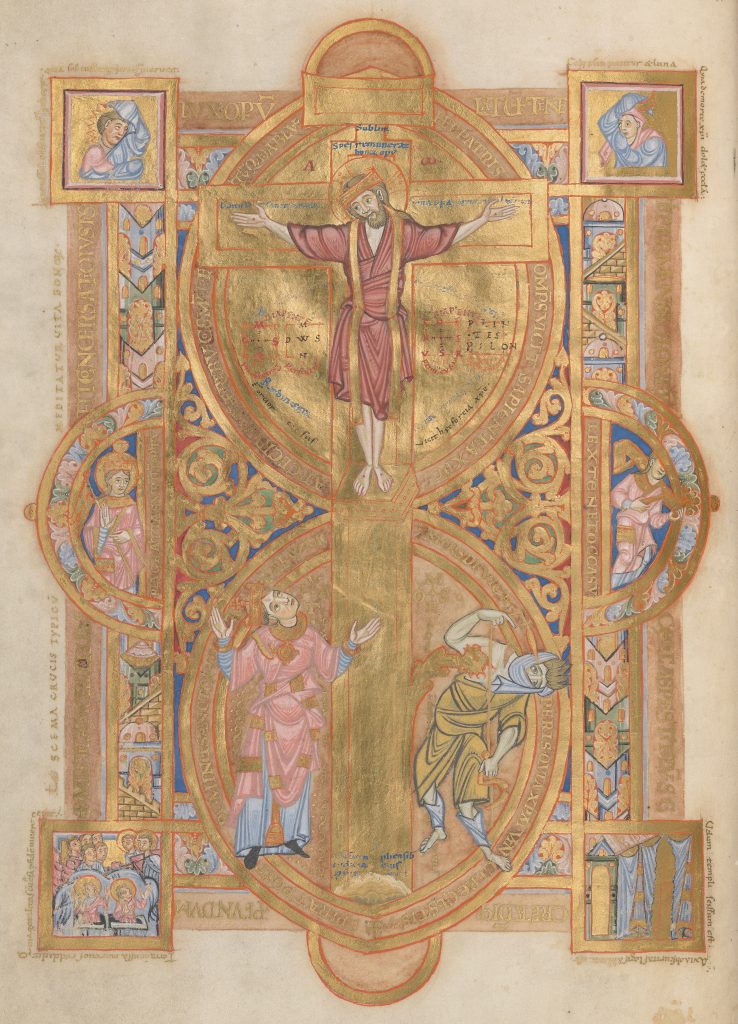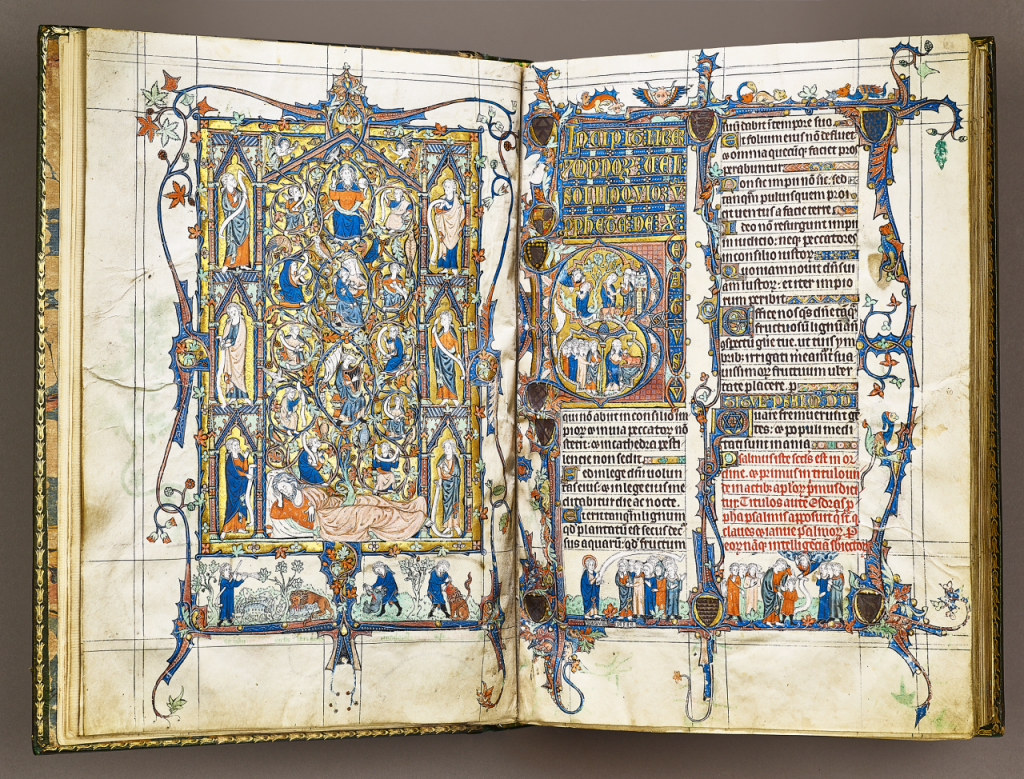Summary
Do you know the painter Ende? She was the first female Spanish manuscript illuminator whose work has been documented. Discover this intriguing and gifted medieval female illuminator, as well as the gem she left us: luminously illuminated manuscripts.
Medieval Art
Because religion was so prominent in everyday life throughout the Middle Ages, early medieval artists were mostly priests and monks who resided in monasteries. Their art was presented to God and his celestial court in exchange for a favor. It served practical and scholarly purposes, such as communicating theology to people, relaying biblical tales, and proclaiming God’s might and the Church’s authority.
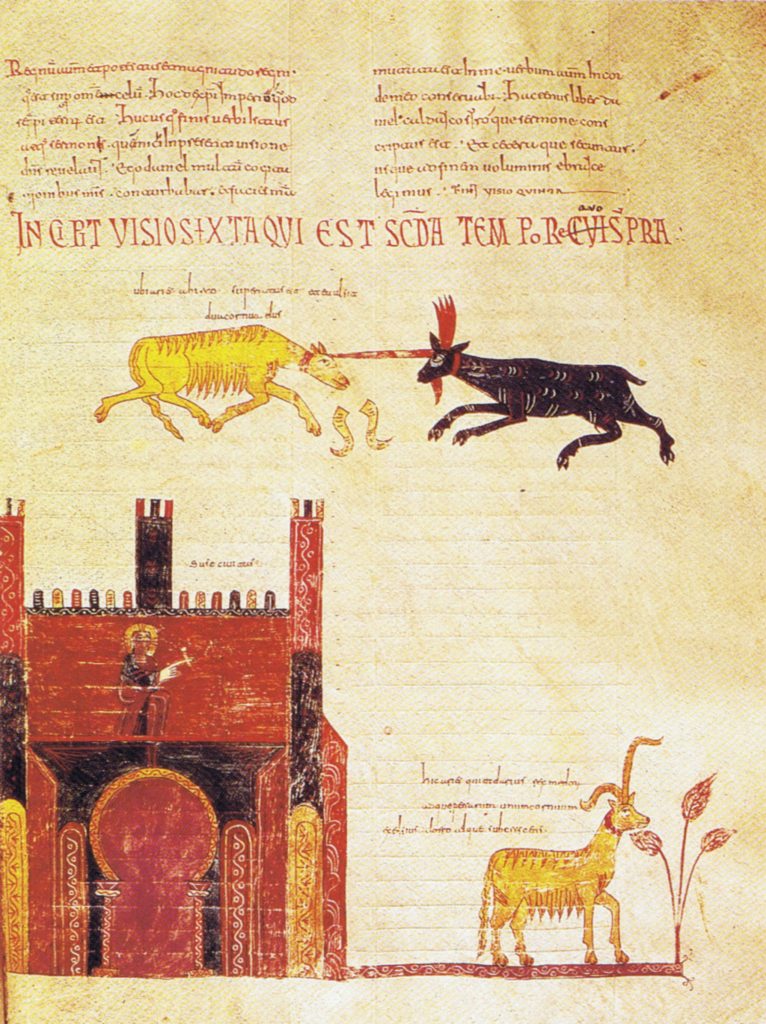
Ende, Vision of the prophet Daniel from Gerona Beatus, ca. 975 CE, Cathedral of Girona, Girona, Spain.
Medieval art is composed of various creative mediums, including illuminated manuscripts, stained glass, metalworks, mosaics, and tapestries.
Deriving from the Latin illuminare (“to light up”), the term “illumination” means the decoration of manuscripts with gold or silver and with other bright, luminous colors (as opposed to monochrome black ink, or shades of grey known as “grisaille”), the manuscript thus embellished being described as illuminated.
A Dictionary of English Manuscript Terminology, 1450-2000. Oxford: Oxford University Press, 2013.
Illuminated Manuscripts
The initial usage of books during the Middle Ages was restricted to the nobility and clergy. Priests and monks, among others, required as many worship books as possible to disseminate God’s word and accomplish their purpose. Whenever a new church or monastery was constructed, a new collection of illuminated manuscripts appeared to explain to the reader how God’s power had manifested itself.
Before the invention of printing, copies of books were written by hand. To produce a new manuscript, a monk had to obtain a book to copy, and he might travel long distances to another monastery to borrow it or even stay there to copy it. The texts of these hand-drawn ornamental manuscripts were written in Latin (Latin was the official language of the Church), and they frequently featured gorgeous chapter letters, complex borders, small painted scenes called miniatures, and elaborate full-page images. The exquisite book covers and pages are inlaid with gold and silver borders, allowing their light to be visible from a distance; hence the name illuminated manuscripts.
Furthermore, the gorgeous decoration clarifies and enhances comprehension of the text as many individuals, including those who owned manuscripts, were unable to read them during the Middle Ages.
Gerona Beatus
Gerona Beatus is a miniature manuscript with 284 pages that measure 400 mm by 260 mm apiece. It is a commentary on the Apocalypse by Beato de Liébana, as are all the Beatus. There are 115 miniatures in Gerona Beatus, many of which span an entire page. Inscriptions at the end of the text indicate that this manuscript was produced on July 6, 975. Ende was commissioned by Abbot Dominicus, most likely at the monastery of Tavala. Remarkably, the Gerona colophon signs the artists’ names: “Ende pintrix et Dei adiutrix, frater Emeterius et presbiter” (Ende, painter and helper of God, Emeterious, brother and elder).
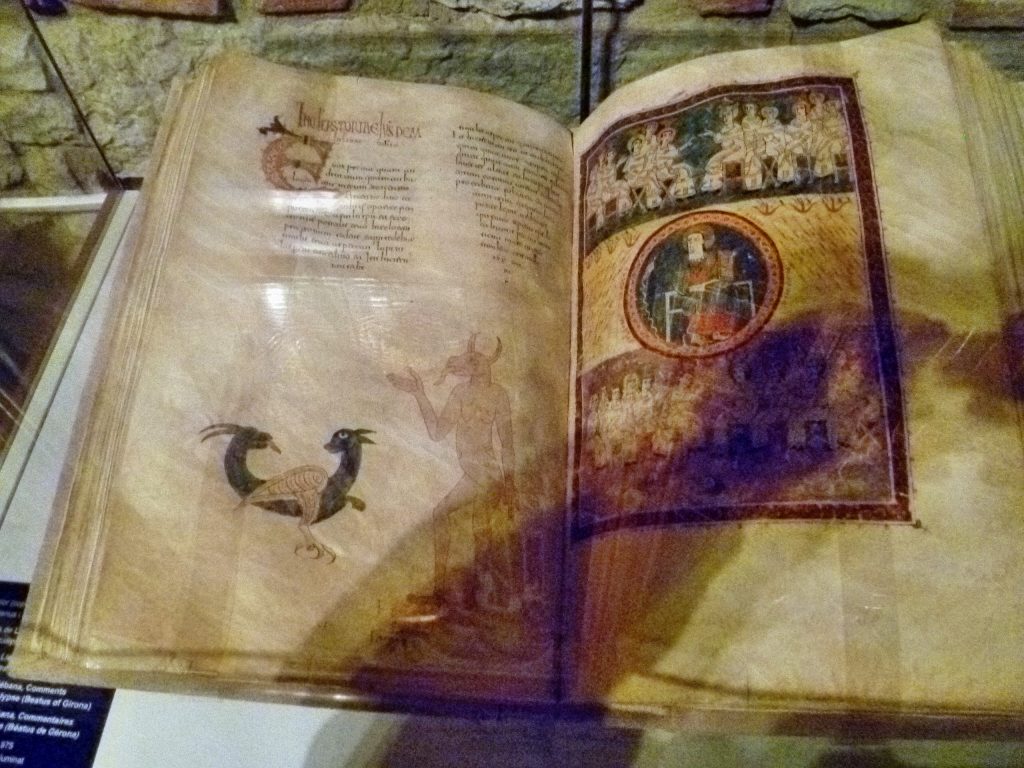
Ende, Gerona Beatus, ca. 975 CE, Cathedral of Girona, Catalonia, Spain. Photo by JoJan via Wikimedia Commons (public domain).
As far as we know, Ende was a Spanish illustrator who lived in the late 10th century and is regarded as the first female European artist to be recorded. She spent a portion of her life at San Salvador de Tábara Monastery in Tábara, Kingdom of León in Medieval Spain. According to the research of John Williams, one of the most eminent experts in Spanish medieval art, Ende may not have been a nun but rather belonged to a group of noble women from León who, during those years, rejected both convent life and instead managed their wealth and in a sense decided to go their way.
The Tabara scriptorium, which generated some of the Spanish Middle Ages’ most significant codices, was a cultural lighthouse at the time. Ende felt tremendously at ease working and living at Tábara Monastery, according to her illuminated manuscripts. Above all, it brought Ende closer to the dominant cultural movement of the day, recognizing the need to preserve sacred passages and everlasting images, working for her faith and herself.

Emeterius, Miniature of the scriptorium tower from Tábara Beatus, displaying two of the specified copyists and illuminators alongside a helper, 10th century, National Historical Archive, Madrid, Spain. Archive’s website.
Message to the Church of Smyrna
This miniature is notable because it is preceded by the phrase “INCIPIT EC[C]L[I]A SE[CUN]DA STORIE/SUB SEQVENTES PICTURE” (BEGINS OUT OF THE STORY/BEGINNING OF THE FOLLOWING PICTURE); this is another piece of evidence that this text was meant to be illustrated. St. John is represented on the left with the book and the angel standing and conversing with him while holding a rolled scroll in his right hand. On the right is a temple with three horseshoe arches beneath a massive arch with the inscription “EGLESIE EZMIRNE.” Each arch is adorned with curtains and an altar atop thin columns with a pediment base, geometric capitals, and a cymatium upper portion.
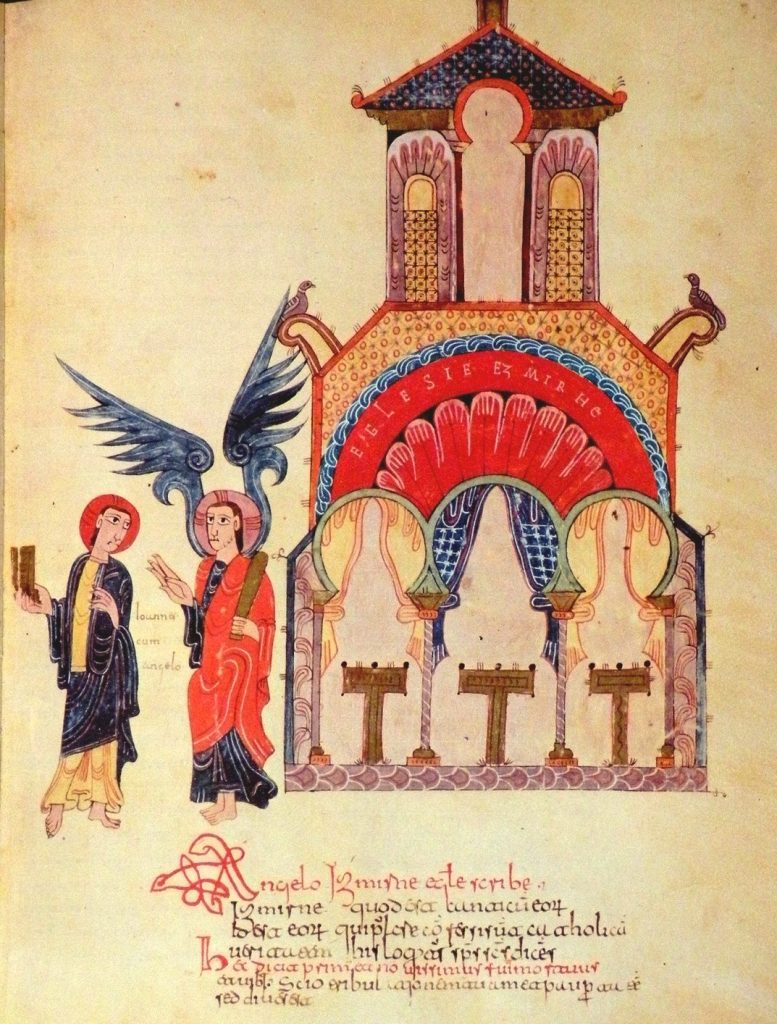
Ende, Message to the Church of Smyrna from Gerona Beatus, ca. 975 CE, Girona Cathedral, Catalonia, Spain.
Ende’s miniature has Mozarab features such as big eyes, vibrant colors, and geometric design.
The Apparition of Christ in the Clouds
These incredibly colorful and ornate clouds painted by Ende conceal the angels’ bodies, revealing only their heads and wings. Christ is depicted in the center genuflecting, a pose more commonly associated with figures in flight, such as the angels depicted in full-length soaring into the skies in this manuscript. As shown by the motion of his left hand, Jesus addresses the people, which are represented by five beardless individuals who, in turn, symbolize the five tribes of the world. Without a border or colored background, this fills the entire page.
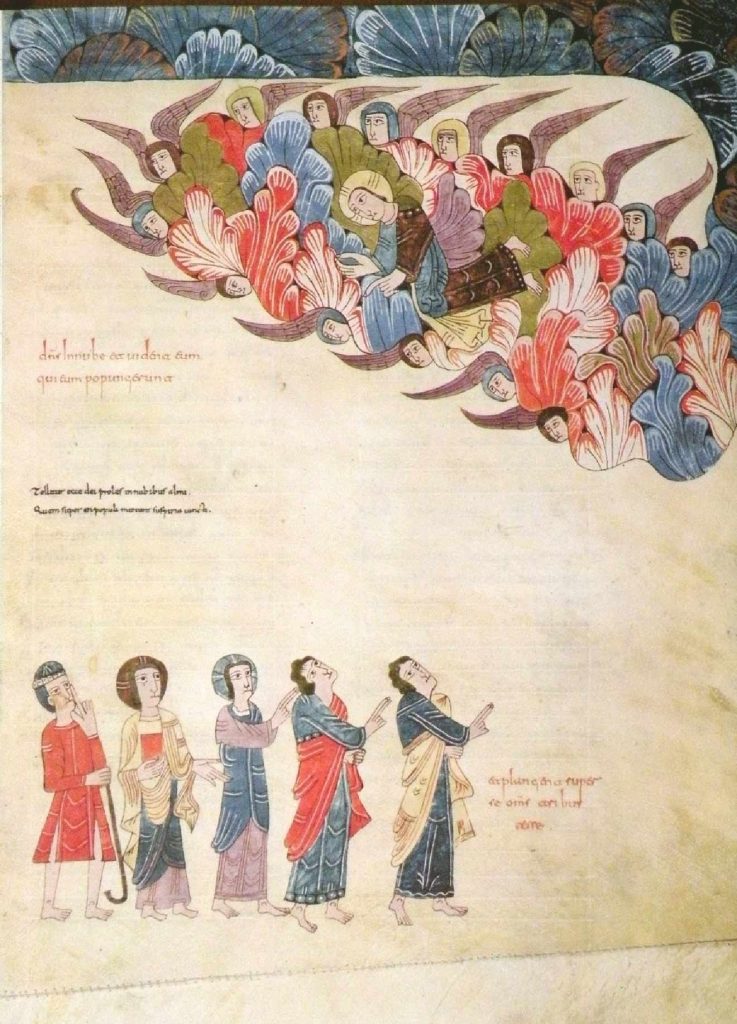
Ende, The Apparition of Christ in the clouds from Gerona Beatus, ca. 975 CE, Girona Cathedral, Catalonia, Spain.
The Alpha, Maiestas Domini, and Portraits of the Authors
This full-page painting at the top of the text combines three components often depicted separately: the author’s portrait, the letter alpha, and Christ in Majesty. Beatus of Liébana drew inspiration for his Commentary on the Apocalypse from the works of the authors depicted at the top of the illustration. They are all gathered at the lecterns, with the book sitting on it, in small or large groups, presumably conversing. Ende depicts enormous, extremely detailed, interwoven patterns in a V-shaped, intertwined leaf-like pattern at the top and bottom of the alpha. The usage of giant initials occupying the entire page has its roots in Carolingian art, where this page layout was prevalent.
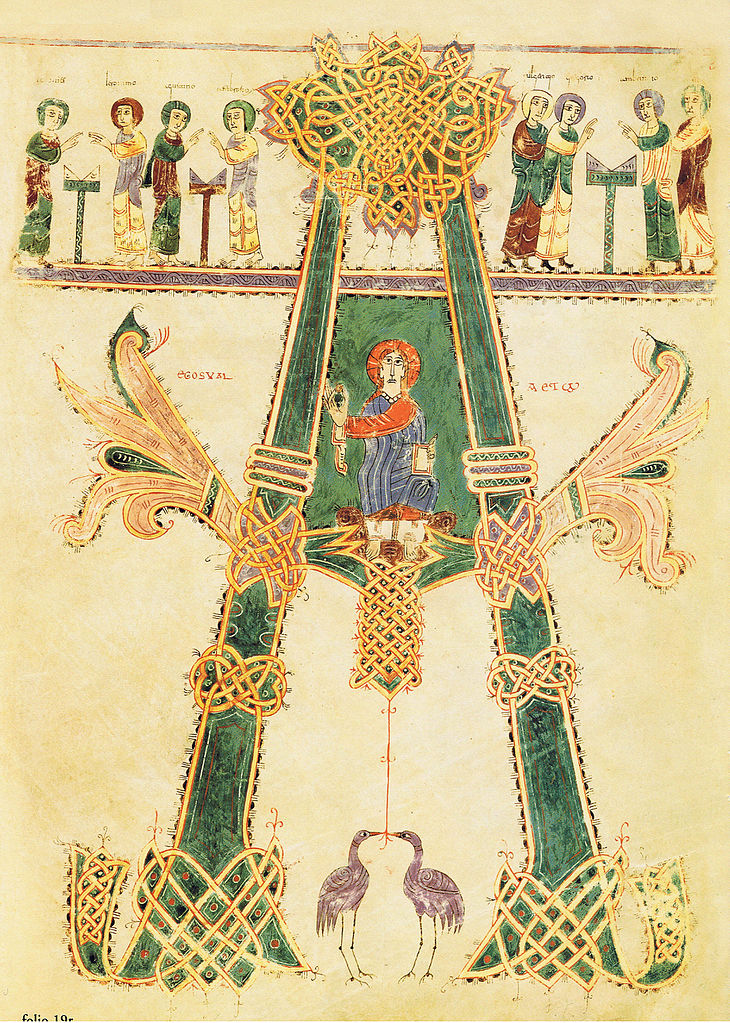
Ende, The Alpha, the Maiestas Domini, and the Portraits of the Authors from Gerona Beatus, ca. 975 CE, Girona Cathedral, Catalonia, Spain.
A close examination of the Girona colophon clarifies the confusion that has cropped up around her name: spacing indicates that she is En depintrix, not Ende pintrix. Further confirming this reading, the colophon for the Valcavado Beatus also uses the verb depingere (not pingere) for Obecus, its scribe/illuminator.
“Women’s Spaces ”Real and Imagined” in Illustrated Beatus Commentaries (2018), p. 361.
En or Ende?
All Ende has left us is a signature attesting to the outstanding effort she made at the end of the 10th century. However, even her signature is fraught with uncertainty. The colophon of the Gerona Beatus manuscript reads as follows: En depintrix or Ende pintrix, En or Ende. The inability to develop a consensus results from millimeter differences and uncertainties regarding the correct usage of Latin.
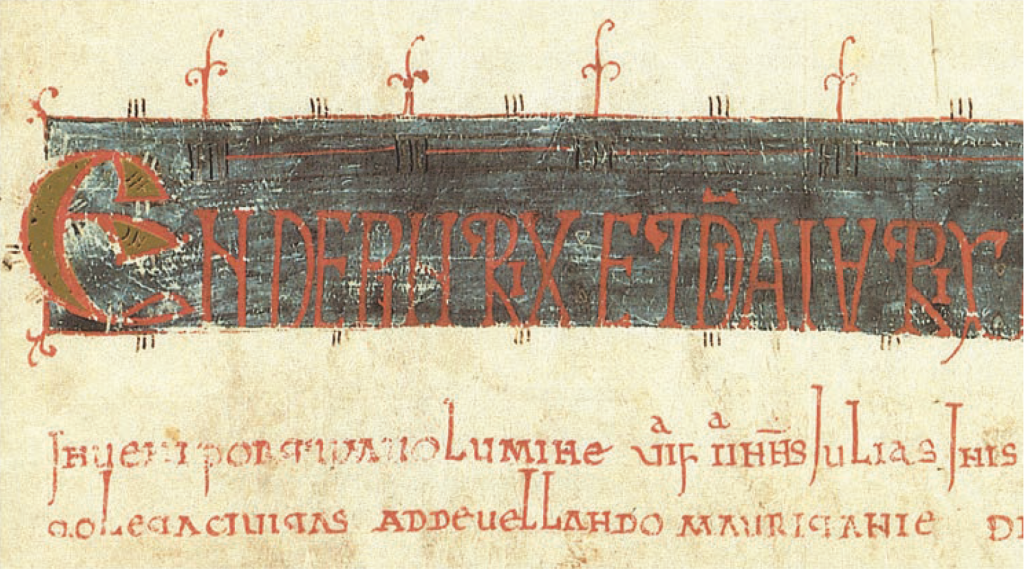
Ende, Gerona Beatus, ca. 975 CE, Cathedral of Girona, Catalonia, Spain. Photo by John Williams. Detail.
The illuminated manuscripts of Ende allow something holy to go through her body and manifest in the visuals accompanying the language on parchment, enabling one to attain genuine transcendence with God at the end of time. Gerona Beatus has exceeded the worth of her effort, which is what makes the narrative of Ende, the first Spanish female manuscript illuminator documented, everlasting.
